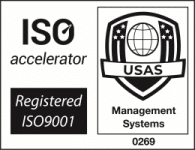Digital twin is a regular topic of discussion, but it can mean different things to different people. Digital twin prototyping (DTP) is essentially simulation. For preventative maintenance, we want to look at a real-time system to determine its health, but this is where the waters can get muddied.

We can program control systems with alarm points that let us know when the process has departed from normal parameters. This is information that is good to have; however, at this point, the problem has already occurred (soft and hard alarms do help here). Generally, only the process measurements are fed into the system. The simple reason is that at its core, a control system wants to act on an input. It is not a problem if something is a bit off or changes – that is what feedback control is for. As long the system matches the set-points it is happy.
There is, however, a grey area, since we can use a control system to report other measurements (relying on manual intervention).
Condition monitoring systems (CMS) use data that is not necessarily used in the control loop. CMS systems can be real-time or ‘flight recorder’ types. The data can be anything, even completely independent of the process control. The CMS can pull process data through a data bus or have separate sensors if there is a need for impartiality.
In short, CMS systems are great, but they are not digital twins.
A digital twin takes all the data and compares it to a ‘gold standard’. Now, there are two approaches. The first is our DTP, where we have to model all the measurements. A model like this is good, but it can get hard to manage with so many inputs (especially in real time).
Enter machine learning. Machine learning takes all the data from multiple instances and looks for correlations. This means it is capturing masses of data under different operating conditions. If we have multiple instances, we can set a baseline. If not, we have to have everything running perfectly to find our gold standard.
Once we have the data, digital twin has the power to look at how well the process is running. Even if the control system maintains the set points, the digital twin can determine if something is not quite right (e.g., too much power consumption, a bearing running hotter than it should be, too long a stabilisation time). Let’s look at a bearing as an example. It may run well within its temperature specification, but if it runs hotter than normal under the same load, speed, ambient temperature, and day of the week, the digital twin should flag it – before the bearing experiences stresses that could make it fail.
At Blue Lightning Solutions we have the capability to design and deliver CMS systems and digital twins that are fully integrated into existing DCS or process control systems. Get in touch to find out more.


